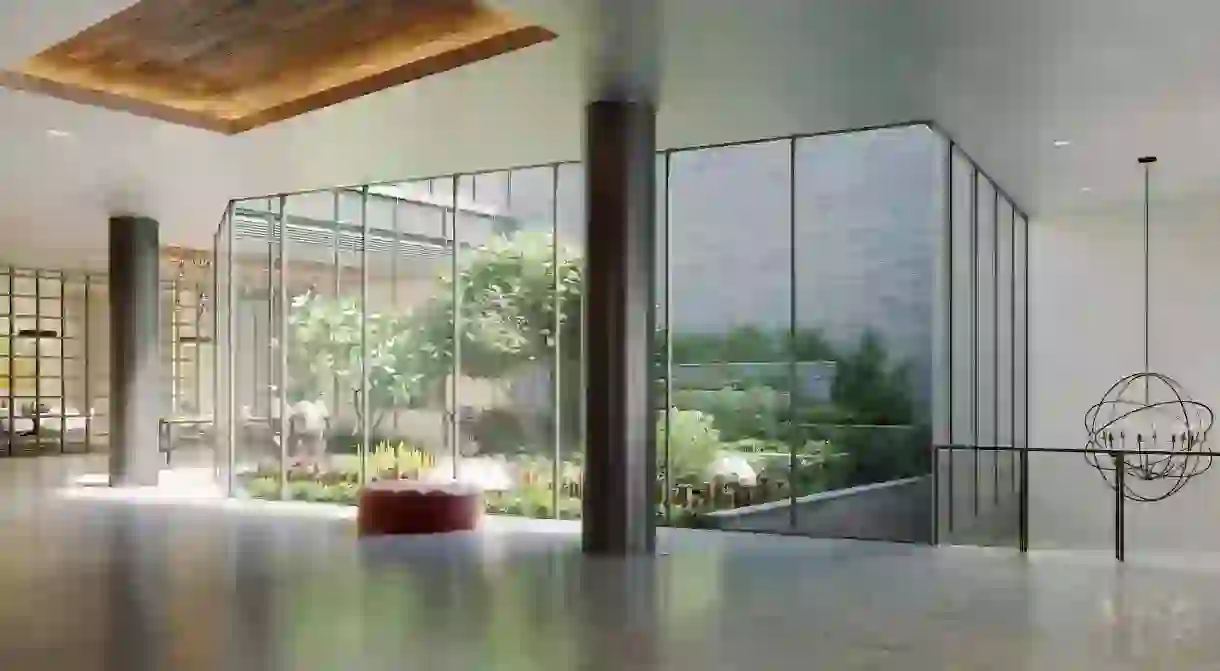Inside Future Green Studio's Japanese-Inspired "Prehistoric" Garden

Future Green Studio created a green atrium for this Manhattan residential building that extends nearly three floors, and features a green wall and viewing garden inspired by Japanese Tsubo-Niwa gardens.

The atrium at 525 W 52 was created for this exact purpose: to enclose a “magical” garden. David Seiter, founding principal and design director of Future Green, says the design “reinforces the terrarium concept, where the “glass enclosed garden puts plants on display as sculptural objects.” Furnished with some of the earliest plant species on earth, the atrium includes magnolia, aristolochia, and a variety of ferns. “[It’s] a timeless environment,” he says, “where distinctive foliage is emphasized over flowers.”
In a city that sometimes feels overwhelmingly concrete, urban gardens are a welcomed reprieve for nature-starved New Yorkers. Seiter says the concept for the atrium stems from the Tsubo-Niwa gardens, where one might find a light-drenched courtyard garden incorporated into the interior architectural experience of a home.

“As our cities increase in density, we need to continue to find ways of integrating nature into our built environment in creative ways.” Biophilia—the theory that humans are hardwired for connection with nature—is something that architects and designers are taking more seriously in their work, and we can see the traces of that in new developments all over the world. “At Future Green, we look at all the interstitial spaces—the roofs, the walls, the streets—as opportunities to weave in a variety of landscapes like green roofs, vine walls, and rain gardens,” he says.
Green walls and gardens are not simply aesthetic trends. They enhance wellbeing and have ecological benefits, especially when those benefits are inherent in the design principles. But it’s also important not to disrupt the existing ecology when implementing truly “green” design: “We can reveal the hidden assets of each individual project to cultivate existing ecological opportunities and figure out how landscape can enhance—not disrupt—the natural life already taking place.” This symbiosis is necessary in terms of green architecture, where a deep-rooted respect for the beauty and the sanctity of nature should be at the core of design work.














